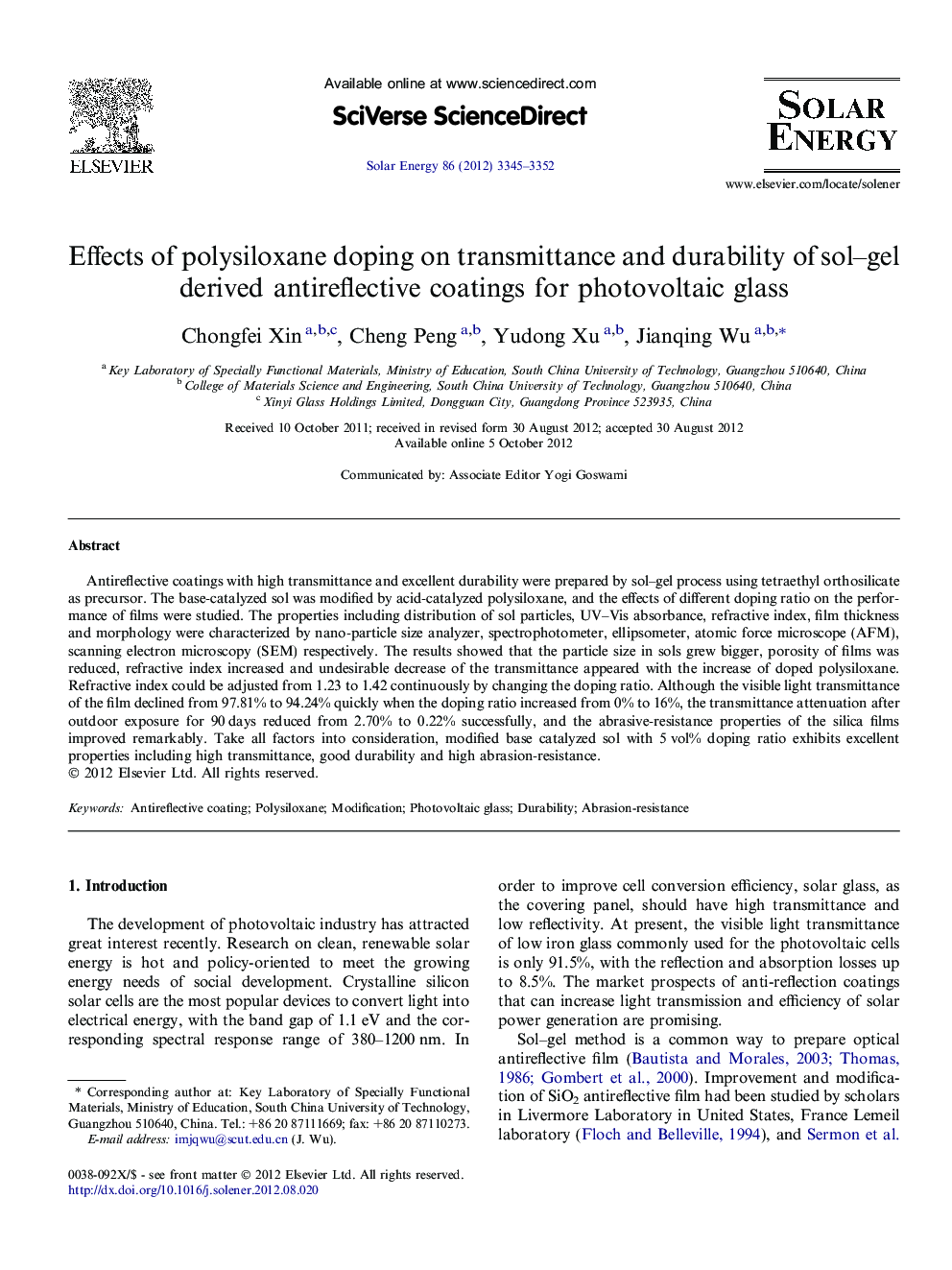| Article ID | Journal | Published Year | Pages | File Type |
|---|---|---|---|---|
| 1550812 | Solar Energy | 2012 | 8 Pages |
Antireflective coatings with high transmittance and excellent durability were prepared by sol–gel process using tetraethyl orthosilicate as precursor. The base-catalyzed sol was modified by acid-catalyzed polysiloxane, and the effects of different doping ratio on the performance of films were studied. The properties including distribution of sol particles, UV–Vis absorbance, refractive index, film thickness and morphology were characterized by nano-particle size analyzer, spectrophotometer, ellipsometer, atomic force microscope (AFM), scanning electron microscopy (SEM) respectively. The results showed that the particle size in sols grew bigger, porosity of films was reduced, refractive index increased and undesirable decrease of the transmittance appeared with the increase of doped polysiloxane. Refractive index could be adjusted from 1.23 to 1.42 continuously by changing the doping ratio. Although the visible light transmittance of the film declined from 97.81% to 94.24% quickly when the doping ratio increased from 0% to 16%, the transmittance attenuation after outdoor exposure for 90 days reduced from 2.70% to 0.22% successfully, and the abrasive-resistance properties of the silica films improved remarkably. Take all factors into consideration, modified base catalyzed sol with 5 vol% doping ratio exhibits excellent properties including high transmittance, good durability and high abrasion-resistance.
► A novel antireflective film with good durability was prepared by sol–gel process. ► Effects of different polysiloxane doping ratio on film’s performance were studied. ► Transmittance and reflective spectra was tested by spectrophotometer. ► Abrasion-resistance of films derived from different sols was compared. ► Modified base catalyzed sol with 5% doping ratio exhibits optimal properties.
